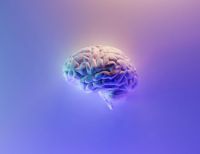
Dr Reuben Rideaux
The study’s senior investigator Dr Reuben Rideaux, from the University of Sydney’s School of Psychology, said: “Despite the conceptual appeal and explanatory power of the Bayesian approach, how the brain calculates probabilities is largely mysterious.”
“Our new study sheds light on this mystery. We discovered that the basic structure and connections within our brain's visual system are set up in a way that allows it to perform Bayesian inference on the sensory data it receives.
“What makes this finding significant is the confirmation that our brains have an inherent design that allows this advanced form of processing, enabling us to interpret our surroundings more effectively.”
The study’s findings not only confirm existing theories about the brain’s use of Bayesian-like inference but open doors to new research and innovation, where the brain’s natural ability for Bayesian inference can be harnessed for practical applications that benefit society.
“Our research, while primarily focussed on visual perception, holds broader implications across the spectrum of neuroscience and psychology,” Dr Rideaux said.
“By understanding the fundamental mechanisms that the brain uses to process and interpret sensory data, we can pave the way for advancements in fields ranging from artificial intelligence, where mimicking such brain functions can revolutionise machine learning, to clinical neurology, potentially offering new strategies for therapeutic interventions in the future.”
The research team, led by Dr William Harrison, made the discovery by recording brain activity from volunteers while they passively viewed displays, engineered to elicit specific neural signals related to visual processing. They then devised mathematical models to compare a spectrum of competing hypotheses about how the human brain perceives vision.














